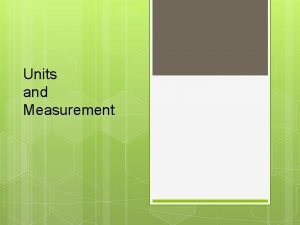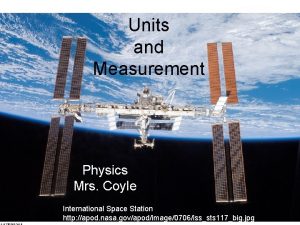NIRT Nanometer Stoichiometric Particle Compound Solutions and Control

- Slides: 1

NIRT: Nanometer Stoichiometric Particle Compound Solutions and Control of their Self-Assembly into the Condensed Phase Chris Sorensen, C. Aakeröy, A. Chakrabarti, K. Klabunde and B. Law Departments of Physics and Chemistry, Kansas State University Goals • • 3. NP-NP Interactions 2. Solution Phase and Nucleation Synthesize a library of monodisperse functional nanoparticles (NP). Study NP solution phase behavior and nucleation. Controlled assembly of NP into 2 d and 3 d superlattices and gels. Study NP solution surface and interfacial properties. • Core-core • Core-ligand • Ligand-ligand All mediated by the solvent 1. Synthesis Solvated Metal Atom Dispersion Reactor One phase; individual, dissolved 5. 5 nm NPs. Two phase; clusters of NPs. Au/C 12 SH NP (5. 5 nm) colloidal solution at different temperatures, solvent: t-butyltoluene + 2 -butanone. The phase transition is reversible! Static and dynamic light scattering to observe cluster formation via nucleation as quench NP solution from one phase to two. x = 1. 3 is found in Au/C 12 SH NP superlattices. Deep quench yields lots of small clusters, shallow quench a few big clusters. NPs of Au, Ag, Cd. Se, In. Dia. ~ 4 to 10 nm Ligands. Nonfunctionalized: Cn. SH, Cn. NH 2, P(C 8)3 Functionalized: HSCn. COOH, HSCn polyols Fat Fractals Solution of Au/SHC 11 COOH in DMSO yields fractal/superlattice hybrid, with hydrogen bonds when quenched. 4. Surface Interactions Droplets of Au/3 -mercapto-1, 2 -propanediol NP in H 2 O on glass. Left no NP, contact angle = 7 o; right with NP, contact angle = 23 o. bis(8 -imidazol-1 -yloctyl)disulfide Solvents: toluene, t-butyltoluene, 2 -butanone, CH 3 OH, water, DMSO. NPs affect wetting.

